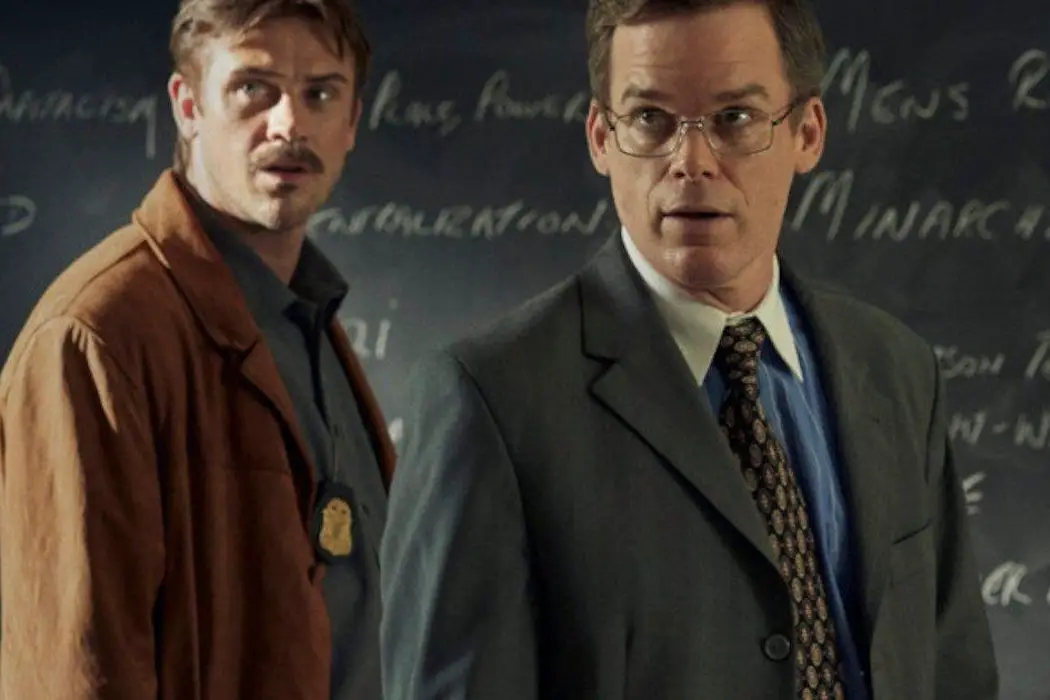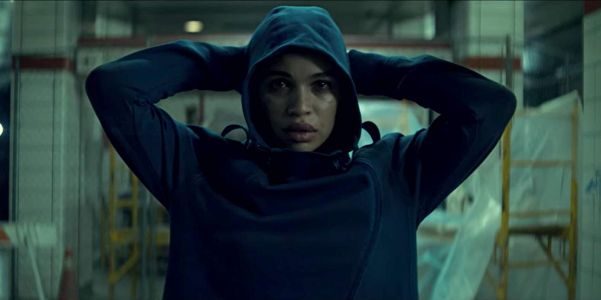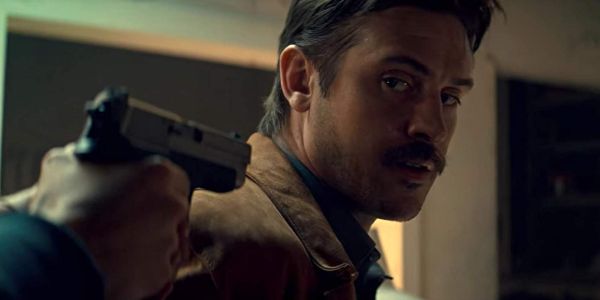IN THE SHADOW OF THE MOON: A Love Letter To Genre Cinema

John Stanford Owen received his MFA from Southern Illinois University,…
In the Shadow of the Moon moves around the puzzle pieces of science fiction, film noir, horror, buddy cop movie, and mystery until a cohesive portrait shows up. Even as they juggle so many genre-specific motifs, the filmmakers thrive at conducting such a wide-ranging symphony. Of course, at a glance, the movie’s elevator pitch sounds like a convoluted equation, some sort of fan service mishmash designed to feed data into the almighty Netflix algorithm. Not the case — without question, this picture earns its license to speed-date multiple genres.
Director Jim Mickle shakes up the cinematic c*cktail with a mise-en-scene that reveals one dreary postcard after another. The grimy wet streets that glow silver beneath the streetlights, the steam and smoke billowing off the all-night diner grills, the secret laboratories complete with flickering fluorescent lights and farm animal test subjects — all of these setting goodies embody the best efforts in world-building. It becomes clear that one needs that type of angle when making a genre-jumping film, but the fact remains that, while the specific tropes pop in and out, the tone remains steady throughout. And this thing follows a dark narrative thread.
If composers make music by finding notes that love one another and marrying them together, then this film’s script works in the same fashion. The song it sings, however, stays bleak, even as the movie entertains us with so much whizzing past our heads at once. We owe credit, perhaps most of all, to the screenwriting team that wove this intricate tapestry. Writers Gregory Weidman and Geoffrey Tock created a complex narrative framework that enables spectacles seen in the likes of Terminator 2, Time Cop, Blade Runner, and Lethal Weapon to flow together. But, even within a film designed to blend a cat-and-mouse serial killer narrative with time travel and a family saga, the script manages to ask major moral what-if questions.
Melting Brains and Existential Questions
The film opens on carnage unfolding in a future not far from today: shattered windows, burning buildings, a flag falling to the concrete, screaming voices silenced. In a flash, the film takes us back to 1988, where we meet our leading character, Locke, a worn out beat cop undergoing one graveyard shift after another. He makes pancakes for his pregnant wife, kisses her goodbye, and heads out to the site of a bus crash. This domestic scene, a moment that clocks in at around two minutes, serves as the only routine, conventional sliver of the film.
After that, brains start melting.

Remember how the film includes horror components alongside its science fiction and film noir mechanisms? Look no further than how the serial killer dispatches her victims. In short, she sticks them with an unidentified isotope, and after a bit, the victim’s brain becomes a bloody soup that seeps from the ears, nostrils, and tear ducts. Call it Theatre of the Absurd, but the macabre elements serve as a springboard for asking big hairy questions about how we treat generations set to inhabit the world after we leave it. Will the planet exist at all? What drastic steps should a person take to reverse the course we take toward extinction? How much will a person’s moral code change when faced with a life-or-death existential crisis?
Portrait of a Decade in Decline
In this film, circumstances grow suckier every year.
The script uses a decade-by-decade frame tale device to evolve its central character at warp speed. With each chapter set nine years apart, we see only the aftermath of a long mental and physical deterioration. In the span of two hours, a softhearted father-to-be becomes a sleuth and vigilante hellbent on solving a case no matter the sacrifices it requires. In other words, we see him scarred long after trauma occurs, never battling the immediate effects of it. Even though we know Locke tells the truth about his experiences going toe-to-toe with a time-jumping serial murderer, his cognitive wiring nevertheless goes berserk. As his laser focus on catching the culprit becomes an obsessive endeavor, his life’s mission leads to him losing his job as a cop and becoming an absentee father living under the forced identity of a conspiracy theorist.

While the technique deflects the chance for us to earn deeper sympathy for our protagonist, the fill-in-the-blanks route toward insanity ensures that humdrum moments remain scarce. Even if you remove the melting brains and flying pig corpses (yes, flying pig corpses happen), no one would dare accuse this film of being boring or insulting the audience’s ability to piece together information. Though fantastical happenings abound, the story serves as a character study of one person who copes with pain through fixation. In fact, until the end when the big mystery gets revealed, only trace amounts of exposition come up. The director and writers refuse to hold the audience’s hand, but leave a trail of hints, slowly pulling back the curtain until the final third act epiphany.
The Killing Baby Hitler Question
Despite the multi-genre ambition that drives this film forward, In the Shadow of the Moon serves for the most part as a question of moral ethics. While that description sounds a bit didactic, the narrative crux intends to make us consider what values we would diminish to create the reality we want. The whole shebang breaks down to an age-old question.
For years, we’ve spent time on bar stools and in college lecture halls debating the question about killing an infant Adolf Hitler. This film presents a very similar scenario, and no matter which decision you make, it wags no fingers at you. The scenario: you execute a child who will obliterate millions of lives, but in that moment, the devastation has not yet occurred. No one knows the devastating future but you, and so your status as a savior gets overlooked. In this moment, your identity remains that of someone willing to harm a defenseless being who, for the moment, has done no wrong.
Would you do it?
Given this framework as a meditative yet action-packed piece of cinema, In the Shadow of the Moon joins the ranks of Equilibrium and the most recent Planet of the Apes trilogy as a politically motivated film disguised as a popcorn flick. It owes a debt to the films that came before it, and in some ways, functions as a tribute to those moments that make us remember why we love the movies. But never forget the equation becomes more and more complicated as the film progresses. Once the credits start ascending, you’ll think about your own code and what it would take to break it. Check this one out to see how traditional conventions serve as a means to a more profound end.
Tell us your preference: which film represents the best Netflix has to offer? Let us know in the comments below!
Watch In the Shadow of the Moon
Does content like this matter to you?
Become a Member and support film journalism. Unlock access to all of Film Inquiry`s great articles. Join a community of like-minded readers who are passionate about cinema - get access to our private members Network, give back to independent filmmakers, and more.
John Stanford Owen received his MFA from Southern Illinois University, where he also taught English courses. When JSO is not penning reviews and essays on cinema, he's reading and writing poetry, walking with his dog, or dancing to Radiohead.













